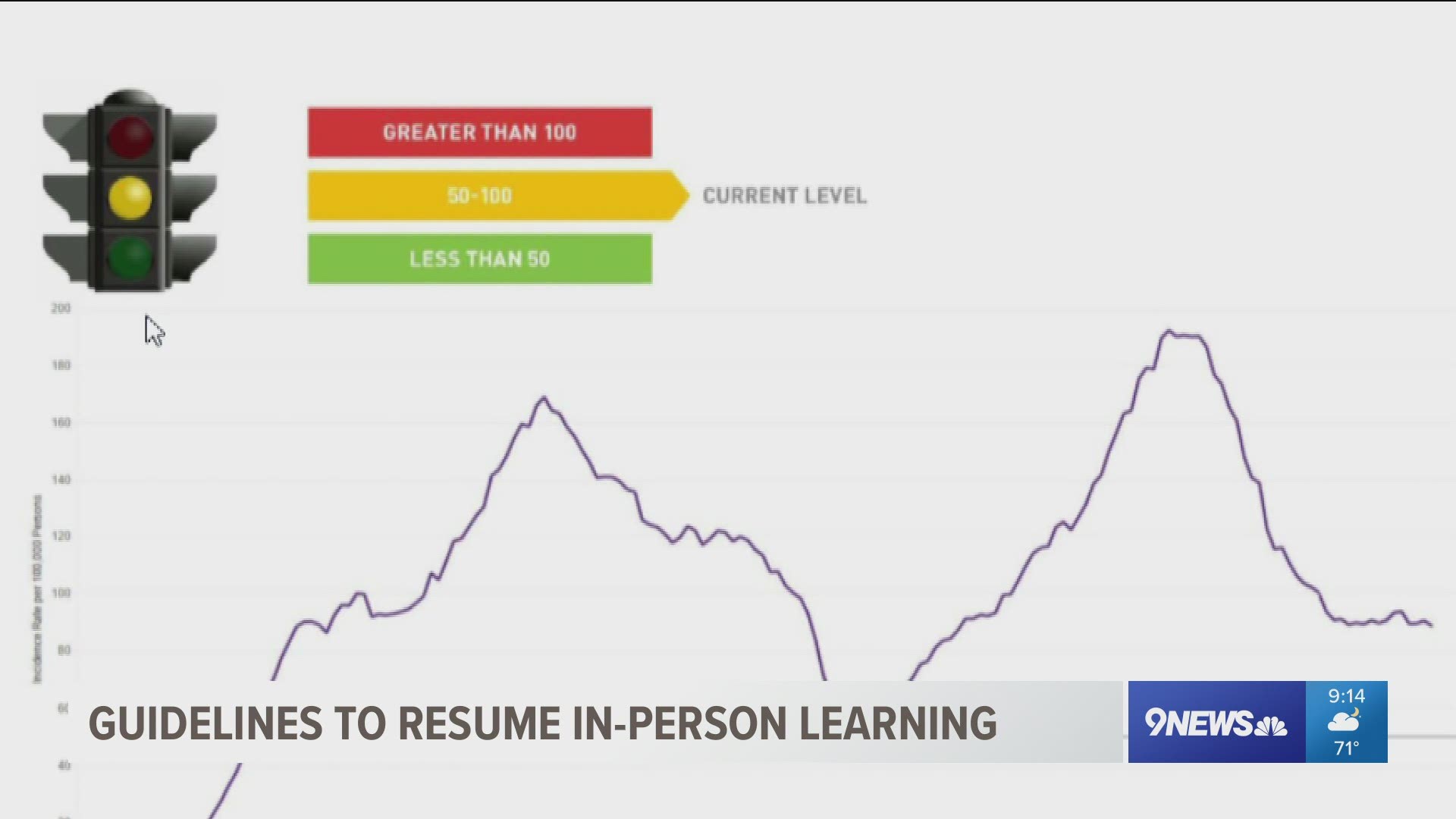DENVER — Denver Public Schools has launched a dashboard on its website to track COVID-19 cases in the district as well as to show the virus’ activity in Denver County, metrics that will be used to guide a return to in-person learning.
Superintendent Susana Cordova discussed the dashboard during her weekly media availability on Wednesday. She said schools now also have the option to begin hosting remote learning centers that offer in-person support to students after the Labor Day holiday.
“Students can be in a safe environment during remote classes,” Cordova said.
As the district weighs bringing students back to school in-person, Cordova said the district will be analyzing Denver County’s trends in new novel coronavirus cases as well as the percentage of positive tests – an indicator of the virus’ activity.
Priority groups for returning back to school include students who need reliable internet, have disabilities, speak English as a second language, and who are younger.
The dashboard uses a color-coded system compared to a stoplight, using green, yellow and red colors to track the progress of three different kinds of data points:
1. The number of positive cases per 100,000 people in Denver County in the past 14 days.
2. The rates of increase or decrease in case numbers per 100,000 people in Denver County in the past 14 days.
3. The percent of positive COVID tests in Denver County (positivity rate).
DPS said the color-coded dashboard will not dictate decisions about returning to in-person learning, but rather, help guide the decision-making process.
"It is not required that all indicators be green to safely open," Cordova said, "But we have had conversations about, [for example] if any indicators move to red, how we use that as a trigger to consider how we can either safely be in school with more aggressive measures to contain COVID or if that is a call to move into remote."
By email, DPS Spokeswoman Winna Maclaren offered additional information about understanding what the different colors of the guidelines mean:
"If any indicators are in yellow, DPS will continue to monitor the situation in consultation with Denver Health officials to ensure that any plans for a safe and gradual return to in-person learning continue to be grounded in health and safety. If any of these indicators moves to red, DPS will develop a plan with Denver Health officials for the next steps needed to keep our students and staff safe."
During a briefing last week, Cordova called the first day of remote learning for the new school year a "great success" and said that thanks to a shipment late last week, they have enough Chromebooks for all students who need them.
More devices have been ordered, however, Cordova said they have enough to meet their current needs.
"It is really about making the connections to make sure that everybody has the resources they need," she said.
Cordova said they've worked on new protocols to support student learning in a remote environment. They include things like a code of conduct and how to apply discipline when necessary in a "virtual space."
DPS began the new school year last Monday with remote learning for everyone after pushing its start date back a week to Aug. 24. They plan to continue the virtual learning for most students through the end of the first quarter, which is in mid-October.
Aurora Public Schools, a district with about 40,000 students, has also designed a system to guide school leaders through in-person learning decisions.
APS is also staying with remote-learning through at least the end of its first quarter on Oct. 8, but Superintendent Rico Munn said he plans to announce the district's plans for the second quarter, based on data, at a school board meeting on Sept. 15.
This week, the APS Board of Education approved a decision matrix system based on nine different data points. Those include COVID-19 cases, trends, and positivity rates in the community, as well as testing for teachers, PPE supplies, and mitigation efforts in schools.
"We want to makes sure everyone is clear what we're looking at and how we're making decisions, so its not based upon things that are uncertain or random, but there's a clear set of guidelines were following," Munn said Thursday.
The matrix works like a points system. Lower case numbers and positivity rates, as well as better mitigation efforts will likely lead to the next threshold of welcoming students back into classrooms. The return to in-person learning would be done in phases.
Munn said the points alone will not determine the district's decisions but will guide school leaders through the process.
"Its not going to be the points that make the decision, its going to be [the school community's] elected officials on the Board of Education, and also my administrative team looking at the data and making evaluations," he said. "Certainly its unprecedented times and what were asking is grace and space for everybody as we try to navigate those things, and try to be flexible as we go through those processes."
SUGGESTED VIDEOS: Local stories from 9NEWS

